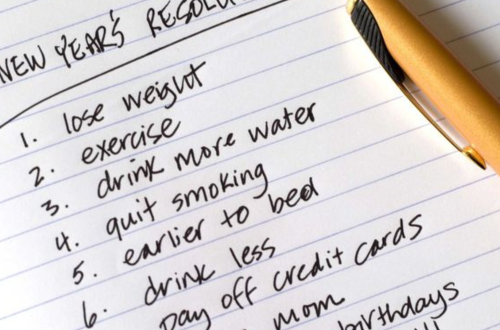Though usually at the price of our tranquillity, we are more connected than ever. Our thoughts seldom get a breather between continuous messages, never-ending scrolling, and the pressure to always be “available”. That’s precisely the reason I started doing something different: every Sunday I go entirely screen-free.
Originally an experiment, this weekly digital detox process soon turned into a reset I eagerly await. Without the distractions of social media or email, each screen-free Sunday has helped me regain my attention, lessen mental tiredness, and reinterpret real life.
This page is for you if you have been feeling exhausted, overstimulated, or just ready to unplug. I’ll go over the unexpected insights I discovered from disconnecting once a week and how you may design your own basic digital detox schedule too.
Why Sundays?
I came to see I was living with digital burnout after penning 7 Signs You Need a Digital Detox. Sundays presented the ideal “soft landing”, an opportunity to stop before a fresh week.
- There is no autopilot surfing on Monday.
- One weekly break for your brain.
- Though in a more laid-back style than the whole 7-day challenge, a constant block of time to practise practices from How to Do a Digital Detox and Actually Stick With It.
The First Sunday: System Shock
I felt adrift on my first Sunday absent from screens. Without my phone, what is left to do? But in a few hours something changed.
- I took out a book I had neglected.
- I scribbled ideas in a diary.
- I went on a real walk; it was calm, quiet, and unplugged.
These activities reflect what I discussed in Offline Activities That Immediately Boost Mood and Energy. Those analogue happy times were anchoring and seductive.
A Weekly Analysis of Learnt Skills
The ritual developed as follows, and what I learnt at every turn:
| Week | Lesson |
| 1 | Uncomfortable at first—without the anesthesia of my phone, thoughts came louder. But so did my curiosity to fill the space. |
| 2 | Unplugging became a ritual—morning journaling, afternoon walks, evening skincare and reflection. It was restful and restorative |
| 3 | Creativity surged. Puzzles, cooking, sketching—my offline hobbies came alive. |
| 4 | I felt a rhythm emerge. Sundays became a sanctuary rather than a challenge. |
| Continued | My weekday habits improved. I found myself limiting evening screen time and being more intentional during the week. |
What My Screen‑Free Sunday Looks Like
I’ve found a pattern that seems reasonable and encouraging:
Morning:

- Get up naturally, not looking at email or Instagram.
- Stretch, jot notes, and make a cup of tea.
- Make and savour breakfast with awareness.
In the afternoon:

- Walk or ride a bike.
- See a friend, phone relatives, or pick up a book.
- Make a basic and filling meal; no screens permitted.
Evening:

- Bath or skincare ritual devoid of technology
- Read or pay attention to a favourite podcast offline.
- To get ready for Monday, use a stand-alone alarm clock instead of your phone.
This fits the no-tech areas described in the 7-day challenge: *”The digital-free dining and bedroom rule”. Simple with intention is what it is.
Top 5 Unexpected Rewards
1. More mental clarity
My headspace opened out once again. My ideas weren’t running against pings and alerts.
2. More intimate connections
Talks with close friends seemed richer. Not skimming in my pocket, I was really here.
3. Improved rest
Not pre-bed doom-scrolling meant sleeping faster and waking up more rested.
4. Reignited interests
More activity in my sketchbook, tea ceremonies, and cooking notes than on my phone ever saw.
5. Getting ready for the week
Mondays no longer felt like a sudden change. It made all the difference to have a “powered-down” ending for the week.
These Lessons Reinforce The Bigger Challenge
If you loved the idea of this weekly ritual, consider diving into my full guide, 7‑Day Digital Detox Challenge to Clear Your Mind and Boost Focus. It includes steps like tracking your screen time on Day 1 and creating no-tech zones on Day 4. Sunday detox is a powerful maintenance routine but the week-long challenge is the deep reset.
How to Make It Stick for You
- Start small; one half-day electronic fast is powerful.
- Use simple markers to start Sunday after breakfast or right after lunch.
- Journal your reflections. Tweetless notes help you track mental shifts.
- Tell someone having someone who knows you’re unplugging keeps things intentional.
- Up your commitment after a month; try going screen-free on a half-day midweek.
Common Struggles When Going Screen-Free (And How to Handle Them)

Even with the best intentions, going screen-free, especially weekly, can come with its fair share of mental roadblocks. Here are some of the most common struggles I faced (and how I moved past them):
1. FOMO (Fear of Missing Out)
It’s easy to feel like you’re missing something important when you’re not online. Maybe it’s an update, an email, or a trending topic.
🧩 Solution: Remind yourself that most things can wait. If it’s urgent, people will call. Your peace is worth more than a meme or sale notification.
2. Boredom in the Beginning
When you’ve relied on screens for entertainment, silence can feel empty at first.
🧩 Solution: Have a short list of go-to offline activities ready like walking, journaling, organising a drawer, or trying a new recipe. Refer back to Offline Activities That Instantly Boost Mood and Energy for inspiration.
3. Unconscious Phone Habits
Even after powering off your phone, you might still reach for it out of muscle memory.
🧩 Solution: Keep your phone out of sight (and ideally in another room). Instead, place a book or notepad nearby so your hands have something else to reach for.
4. Guilt About Being Unreachable
If you’re someone others depend on, being offline can trigger guilt or anxiety.
🧩 Solution: Set expectations. Let friends or family know that you’re taking Sundays to recharge and they can reach you after. The more consistent you are, the more others will respect your boundaries.
5. Falling Off the Habit
It’s normal to skip a week or fall back into screen time, especially during busy seasons.
🧩 Solution: Don’t aim for perfection; aim for consistency. Missing one Sunday doesn’t undo your progress. Reflect on how you feel after the week you didn’t detox. That contrast is often the best motivator to get back on track.
Final Thoughts: Mindfulness Over Masks
Going screen-free every Sunday isn’t radical; it’s restorative.
It’s a weekly reminder that you own your time and focus.
And it underscores a key lesson from all my detox content: technology only serves you when you serve it first.
Your Next Step:
Try one screen‑free Sunday this week.
Keep a short journal of how you feel before, during, and after.
Explore other posts in my digital detox series:
7 Signs You Need a Digital Detox
Offline Activities That Instantly Boost Mood and Energy
How to Do a Digital Detox and Actually Stick With It
7‑Day Digital Detox Challenge to Clear Your Mind and Boost Focus
Your life and mind are worth the break. You may never go back to autopilot.






